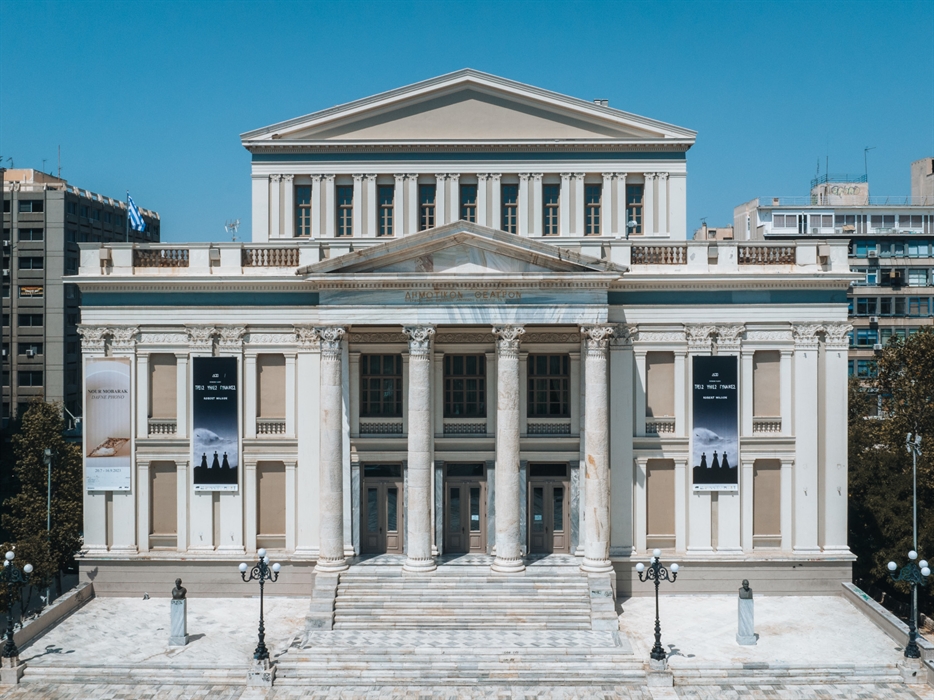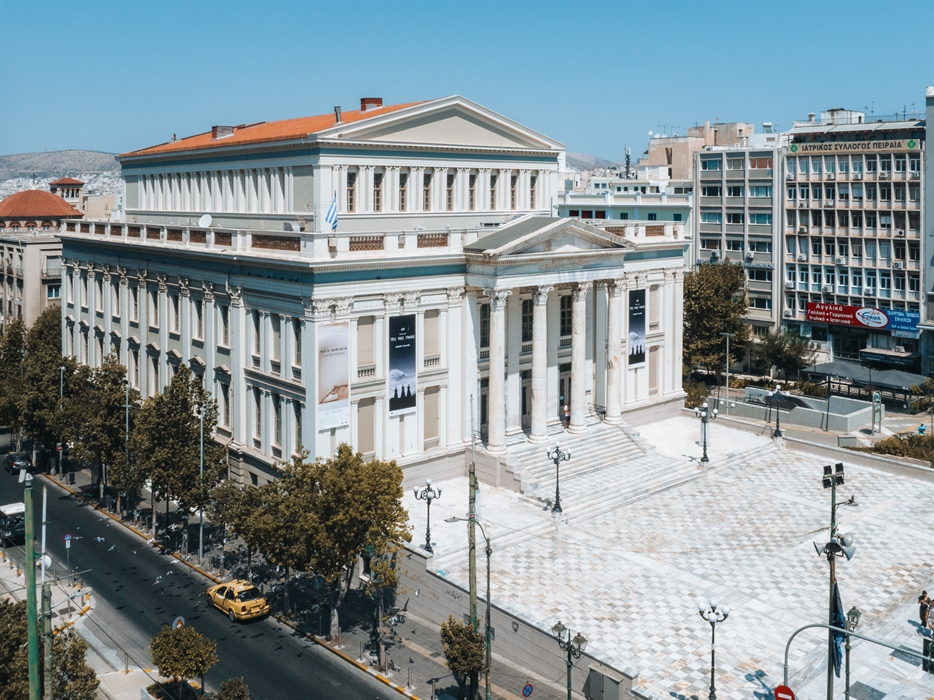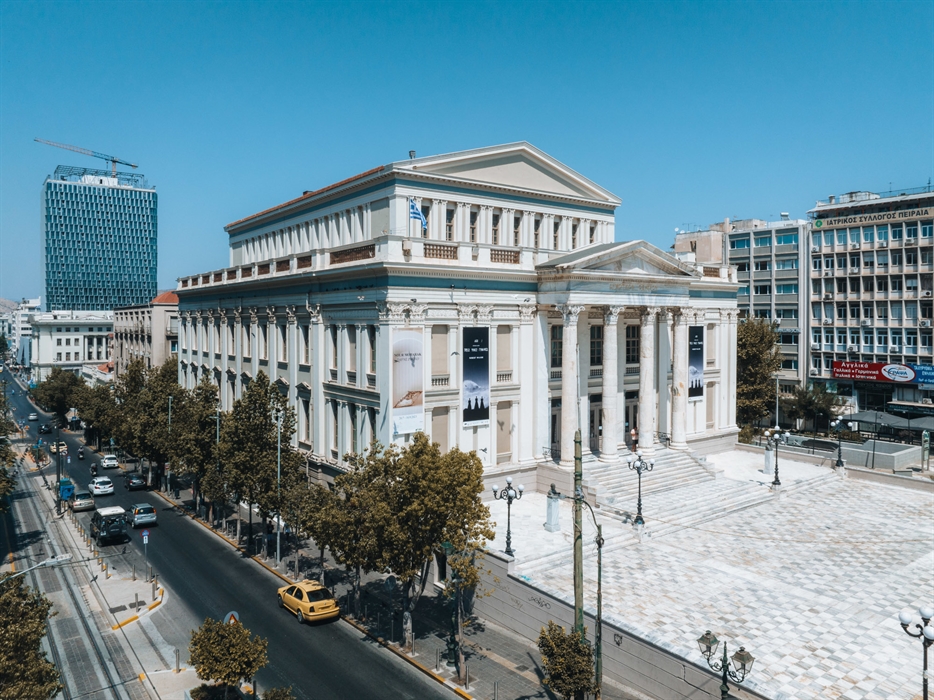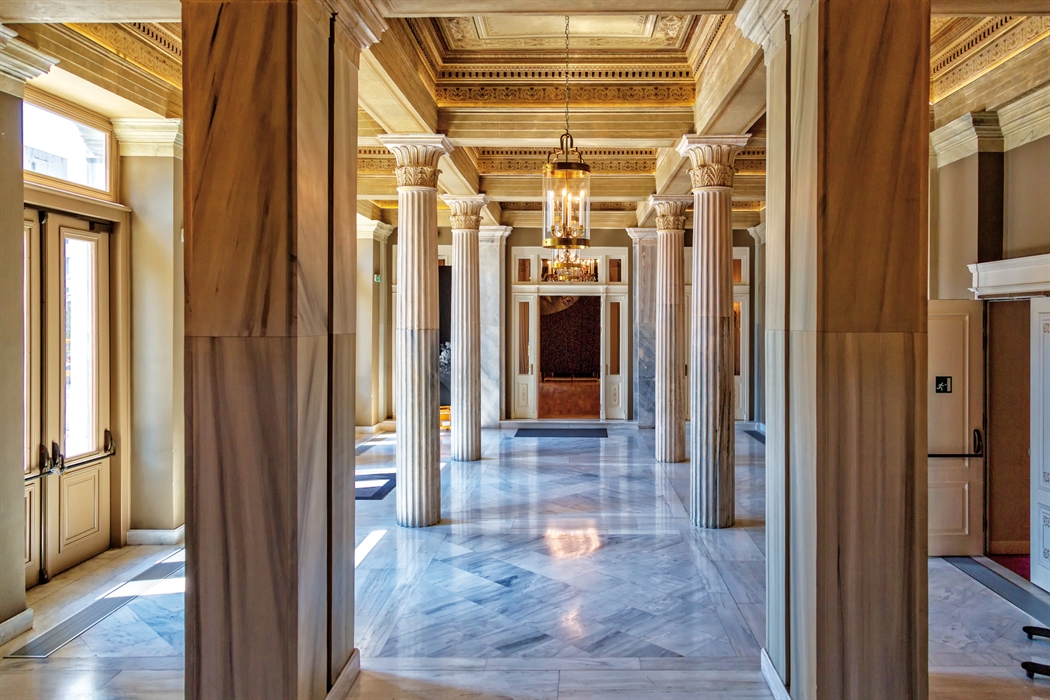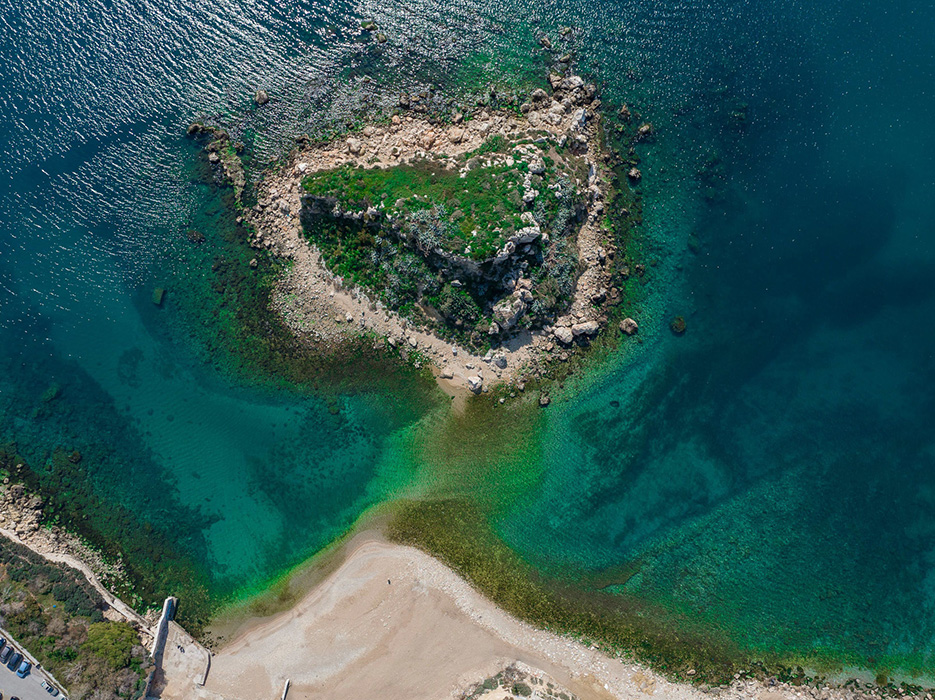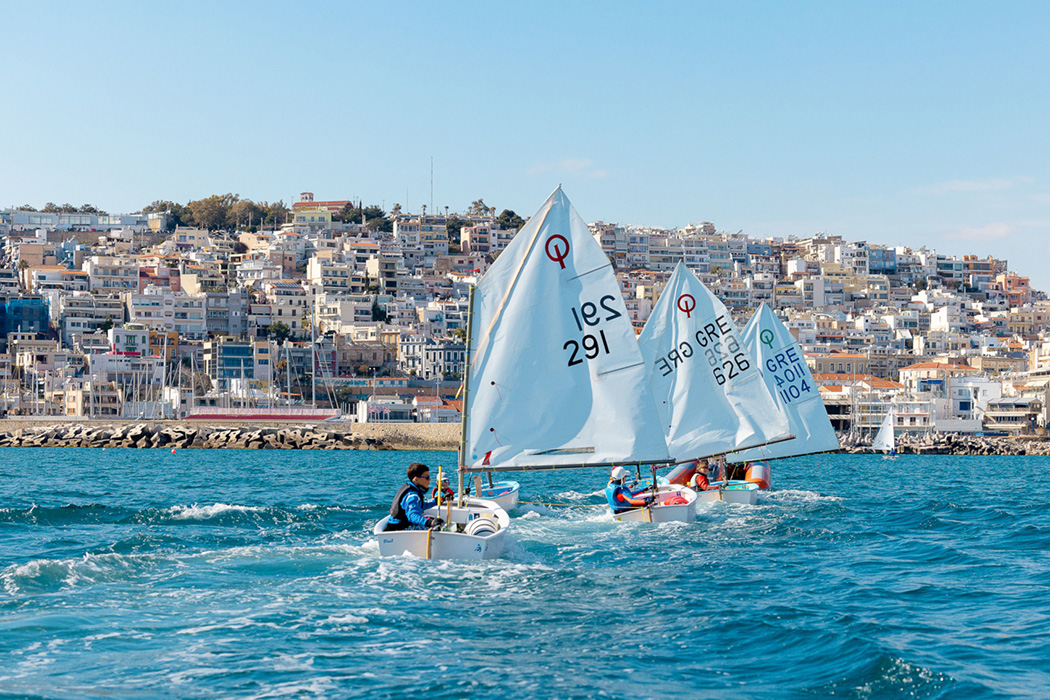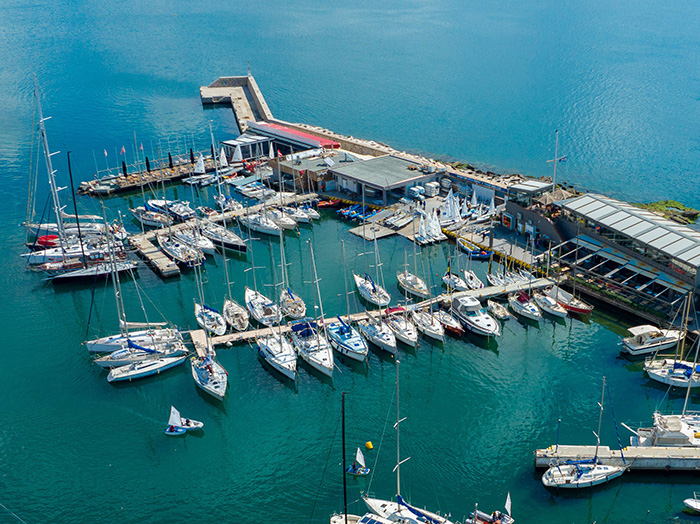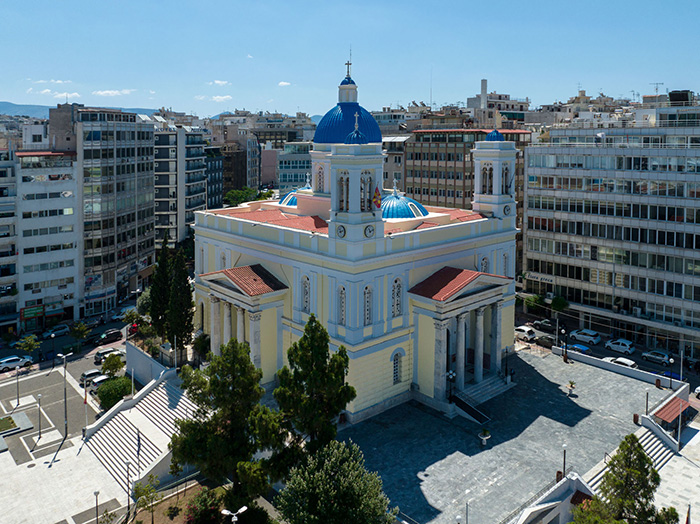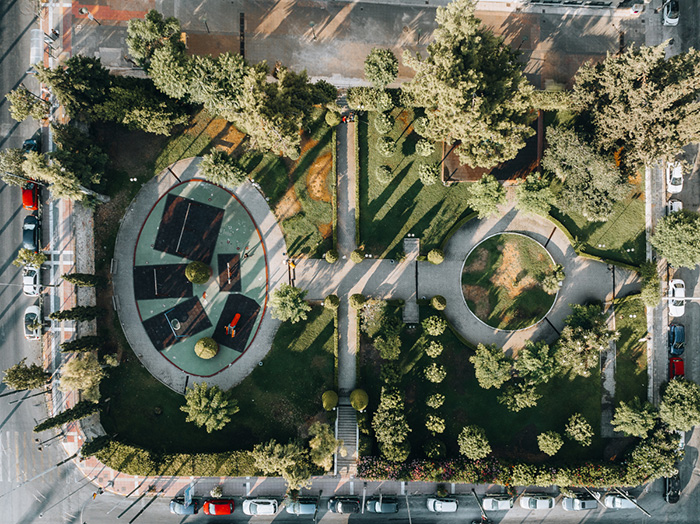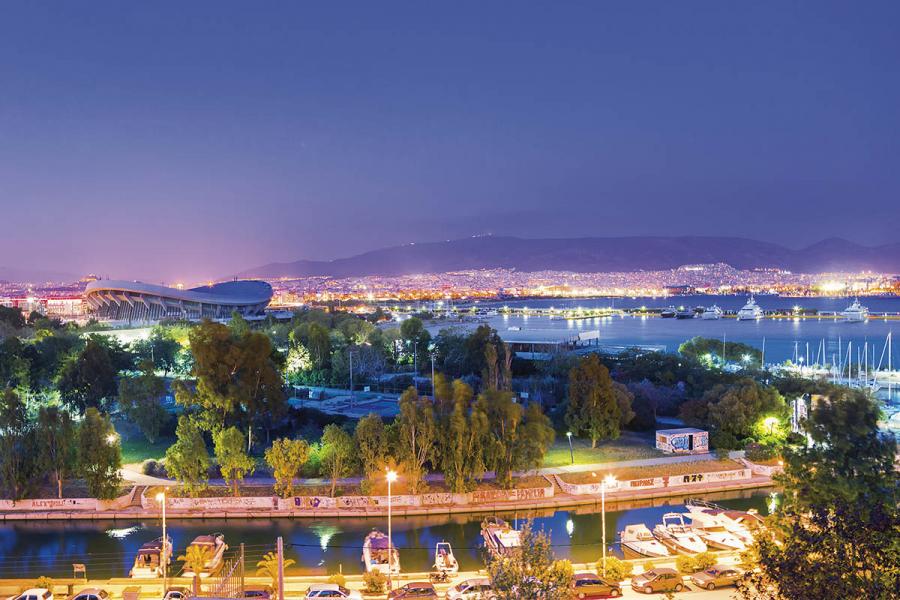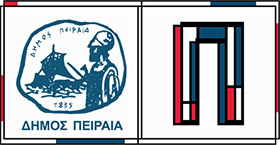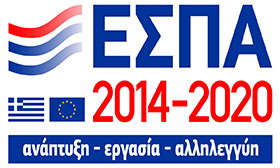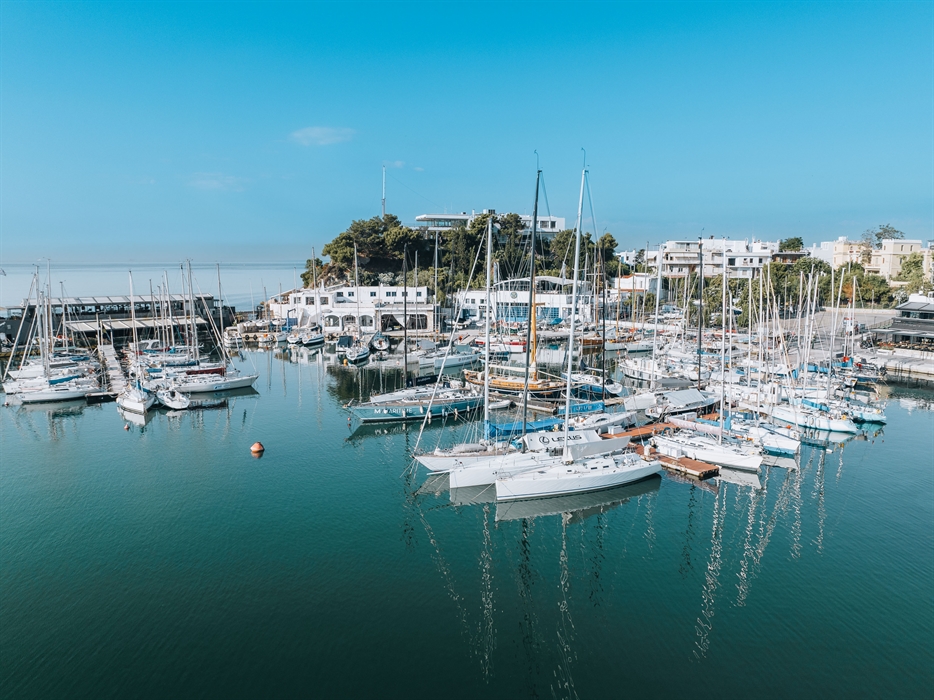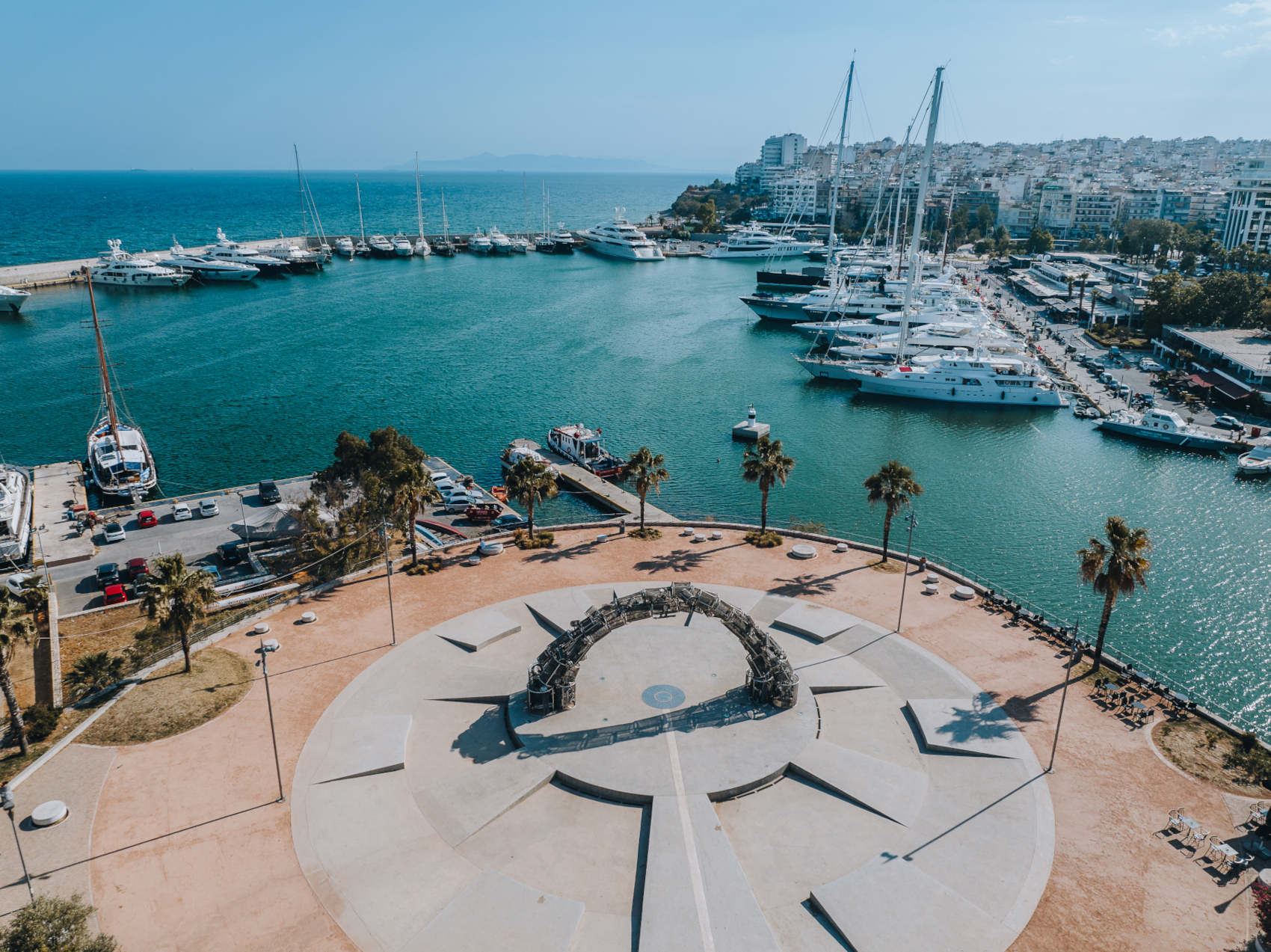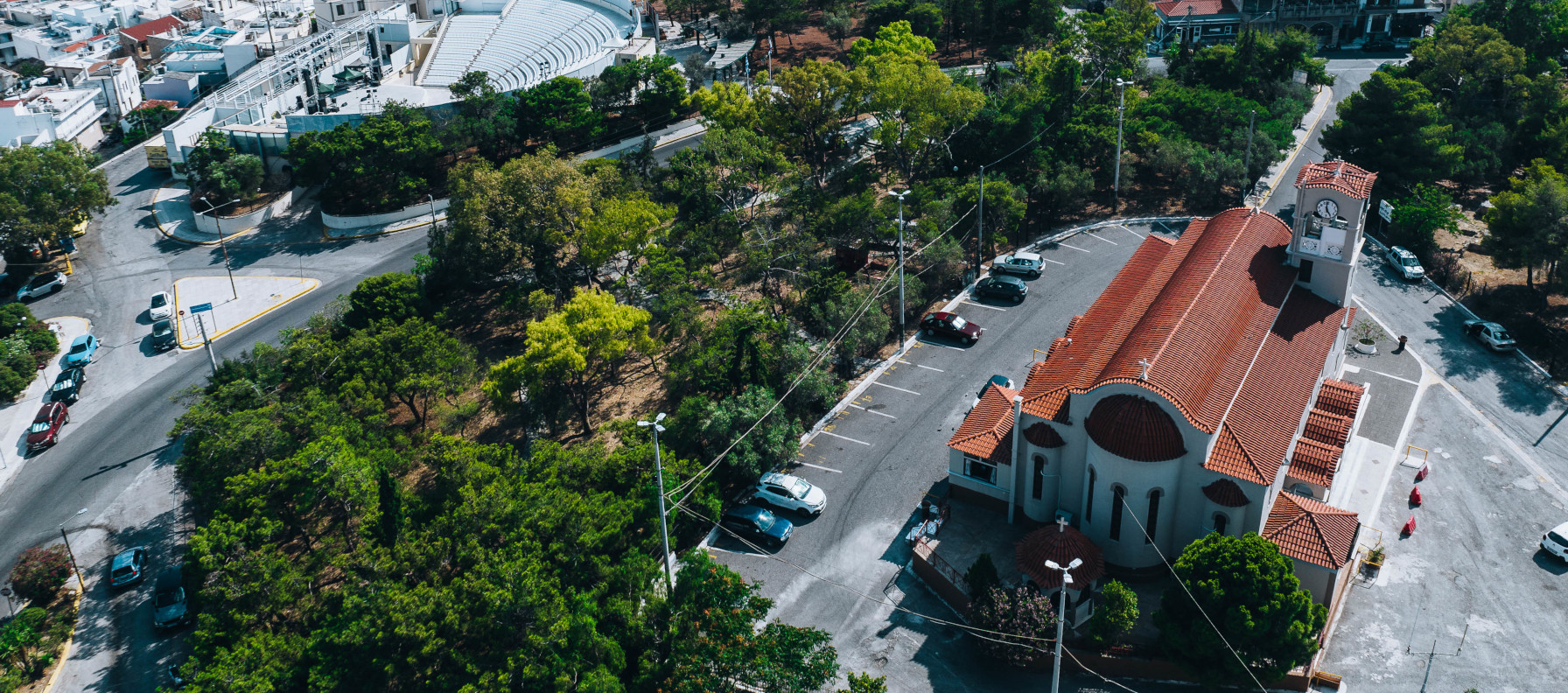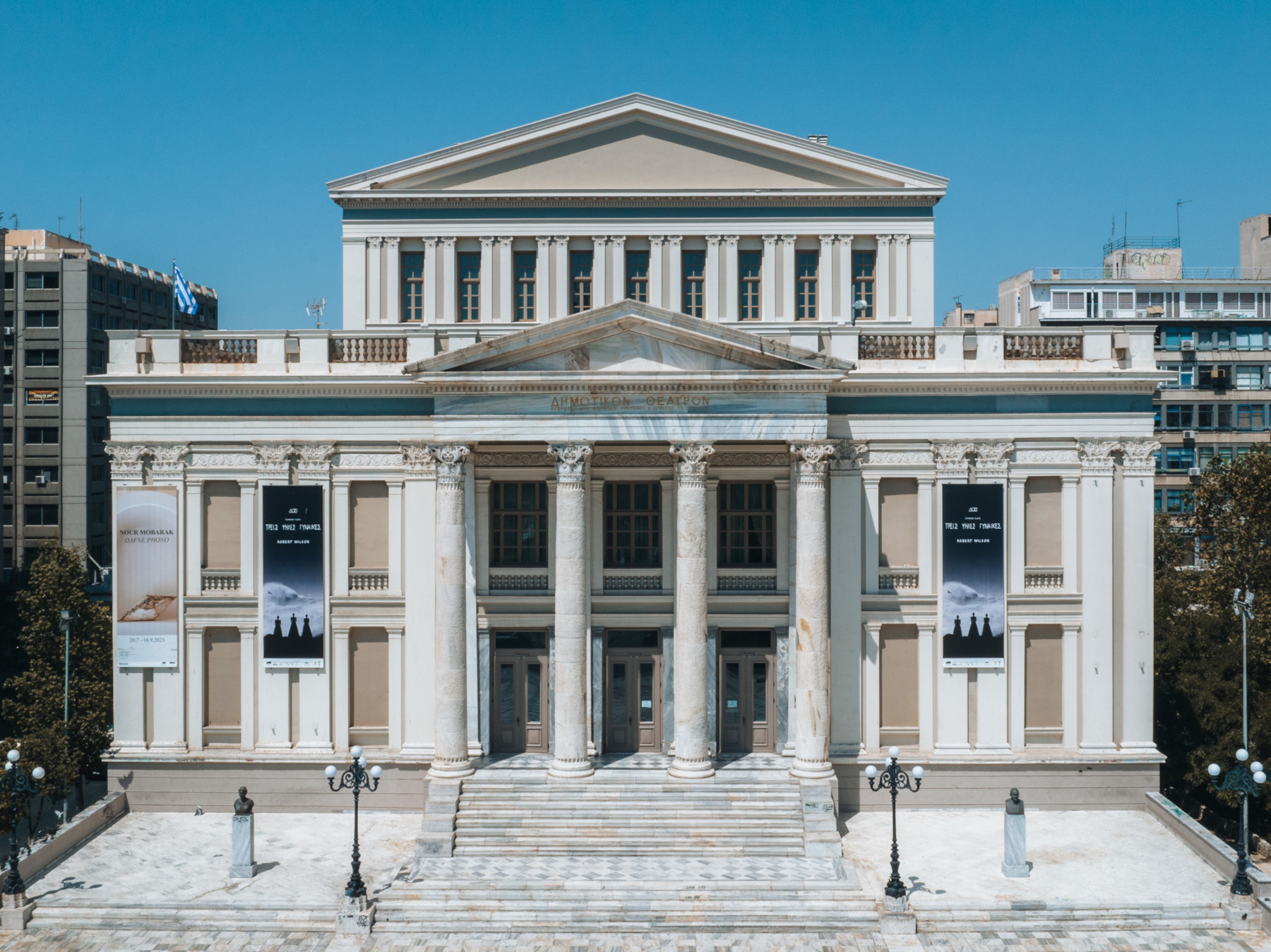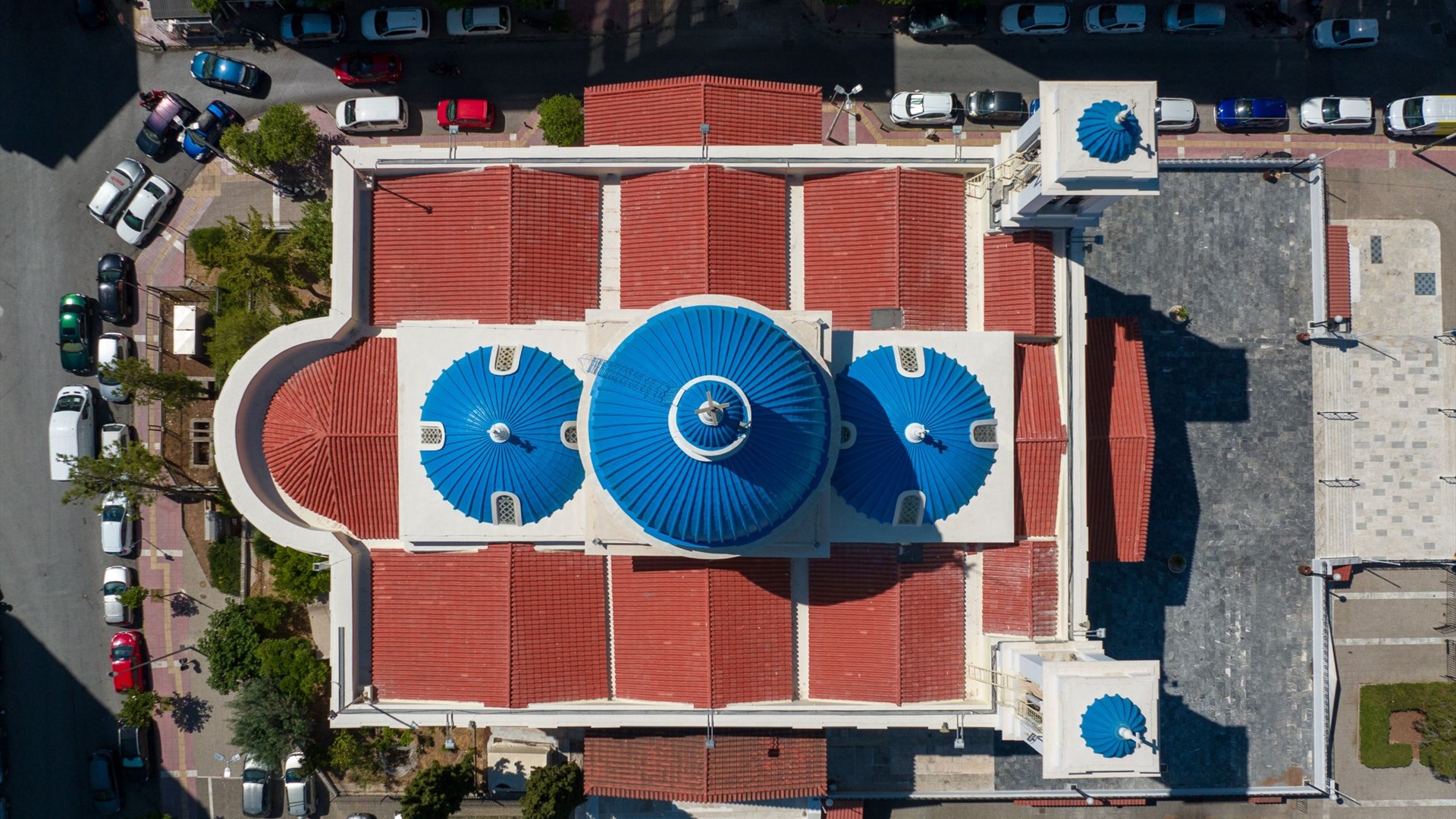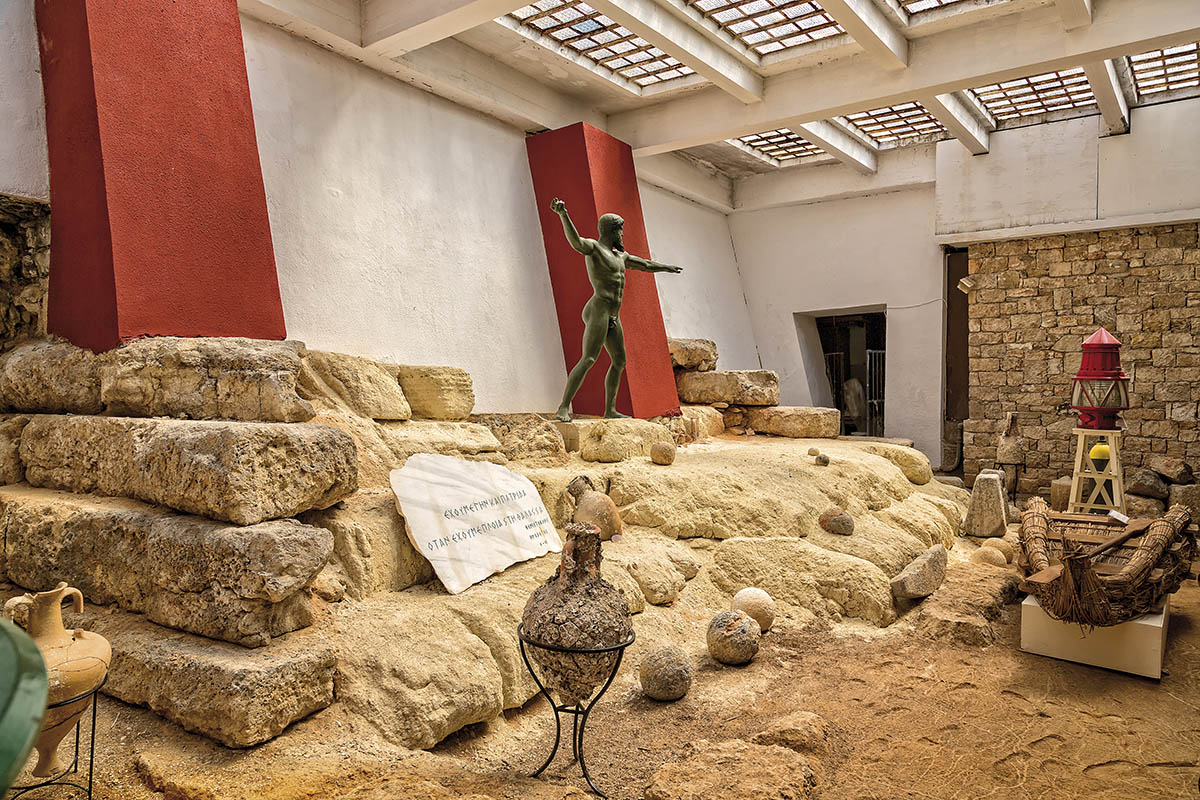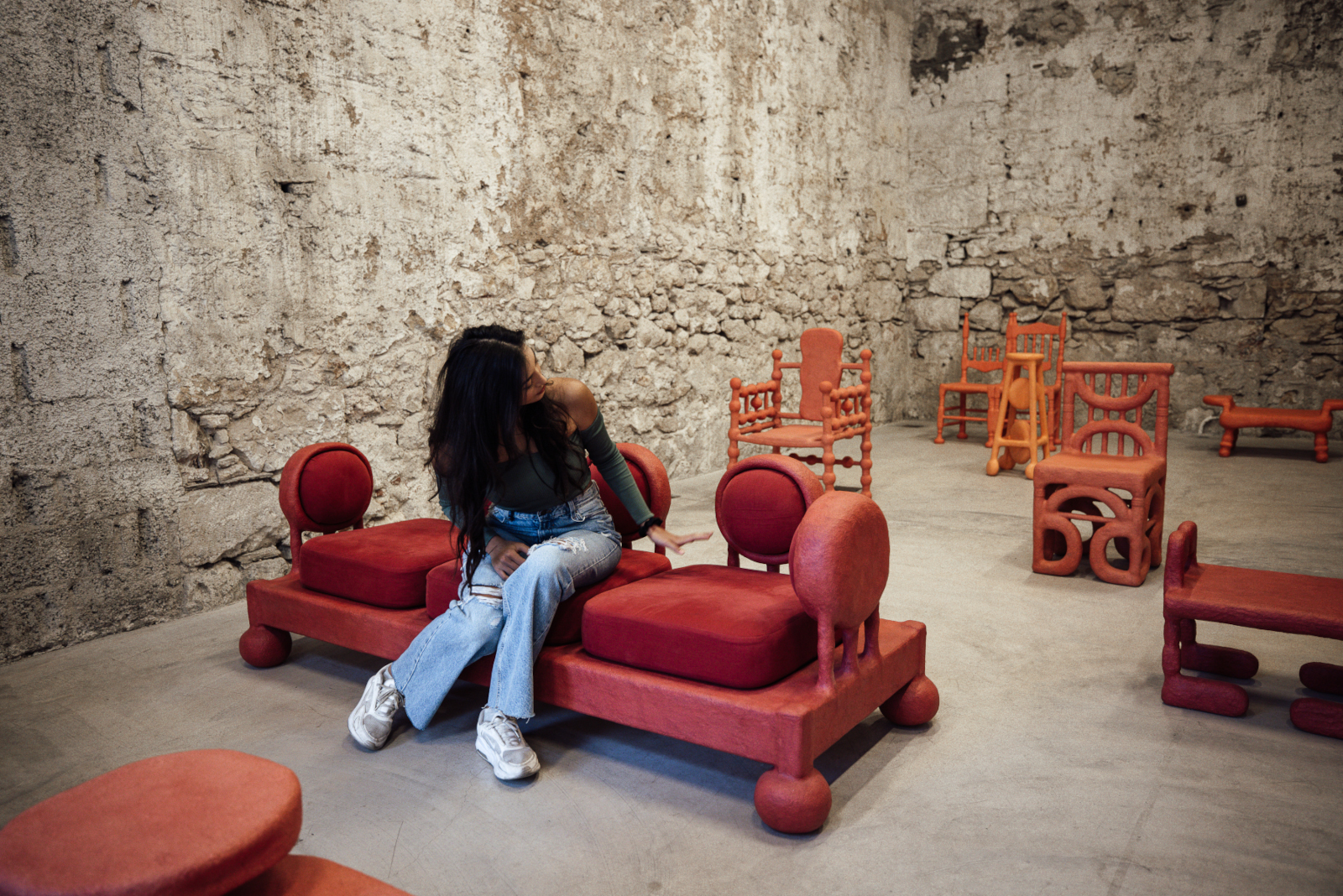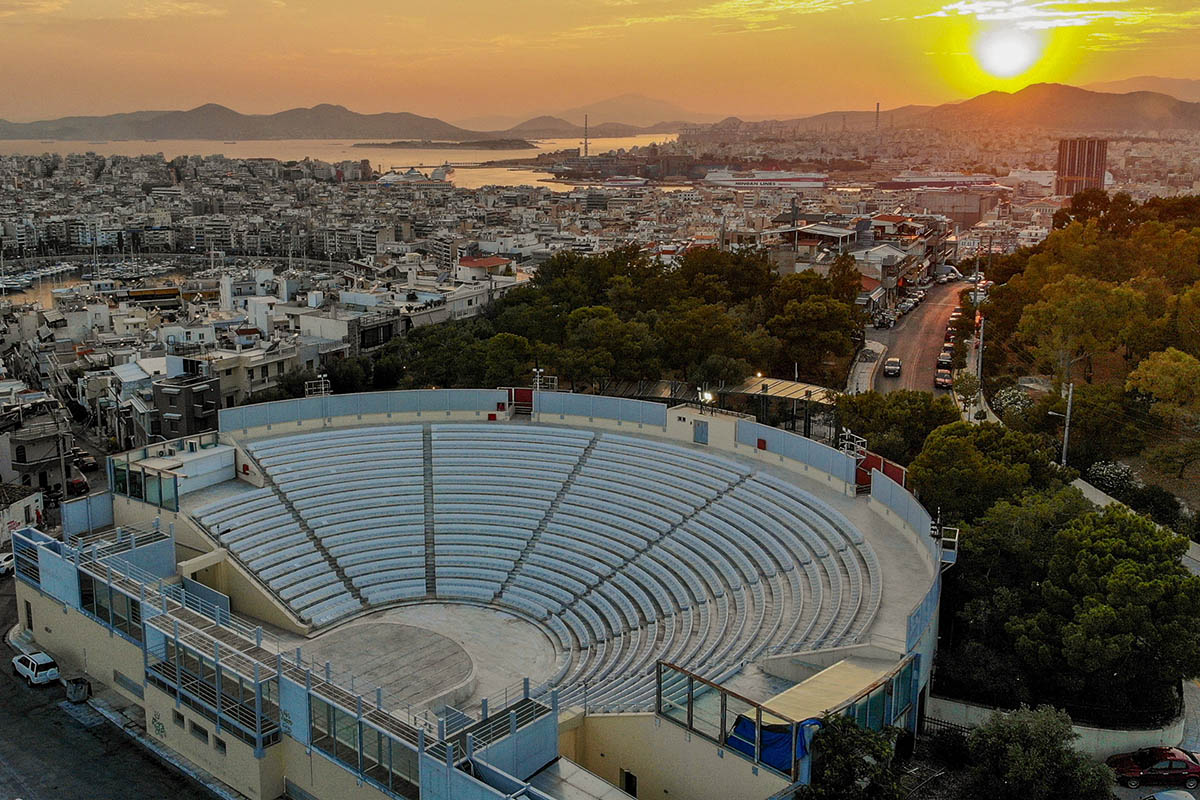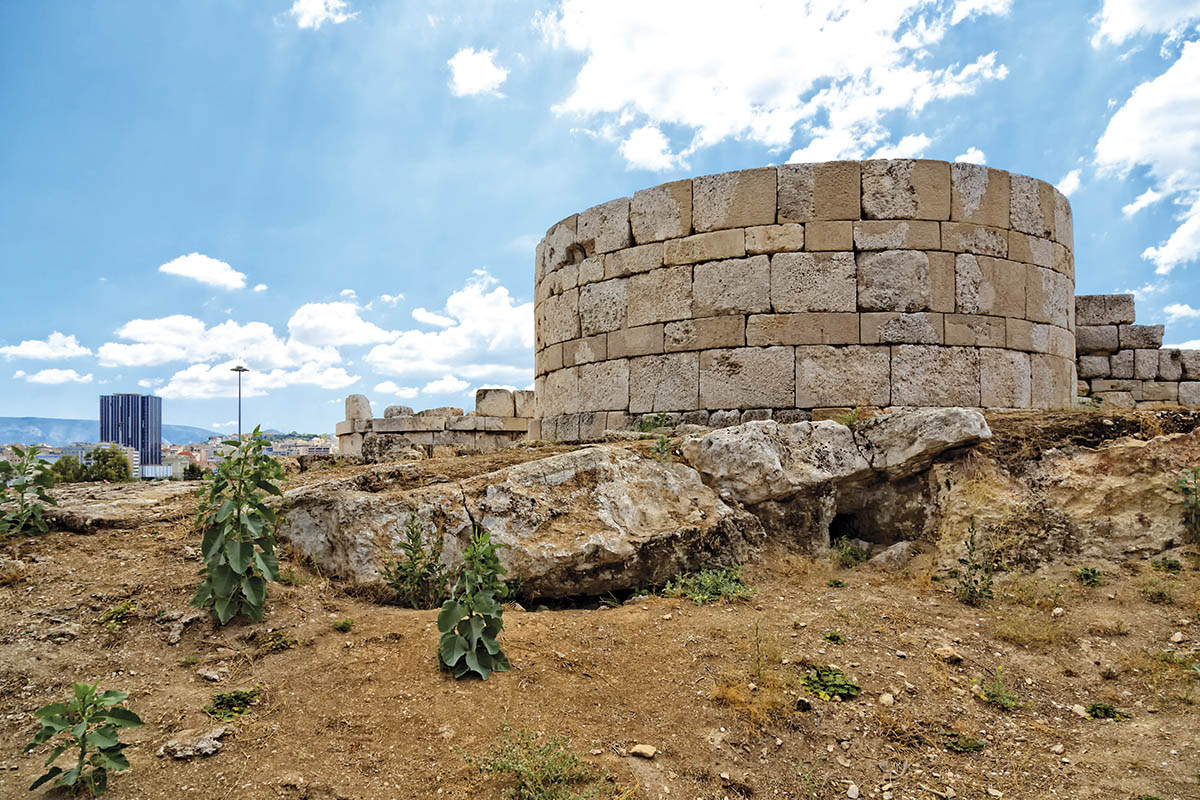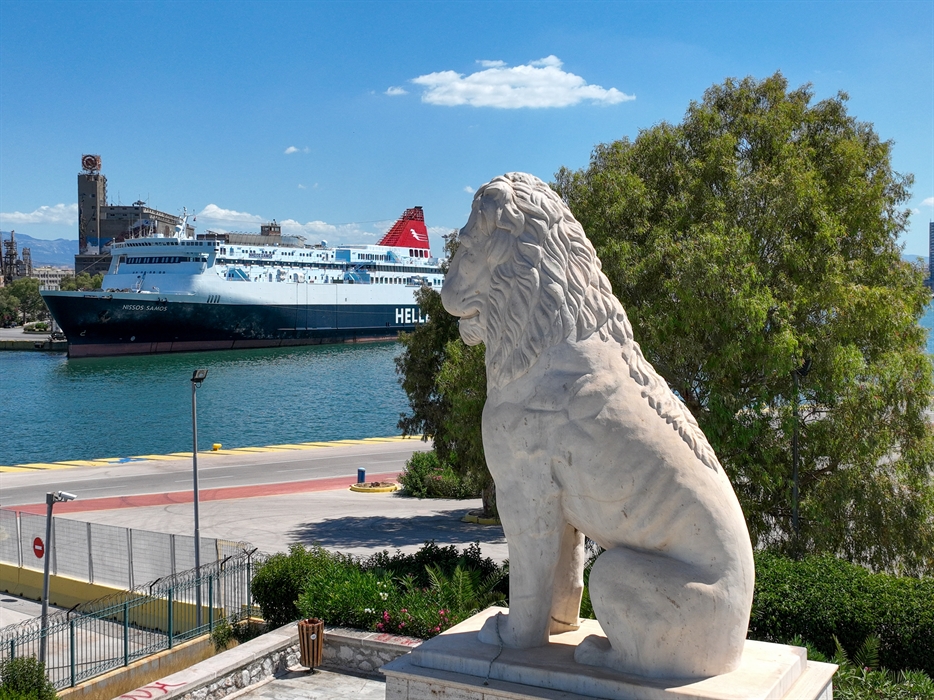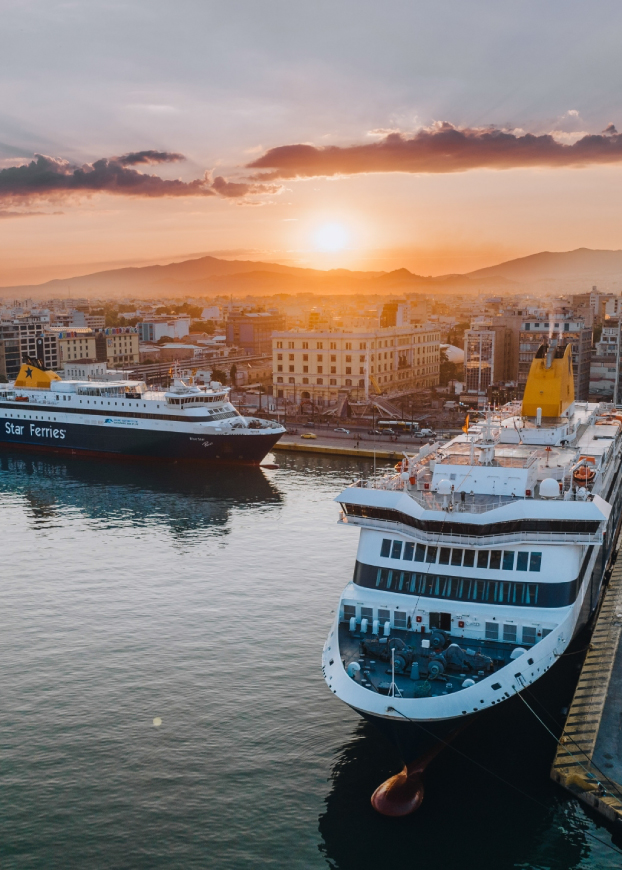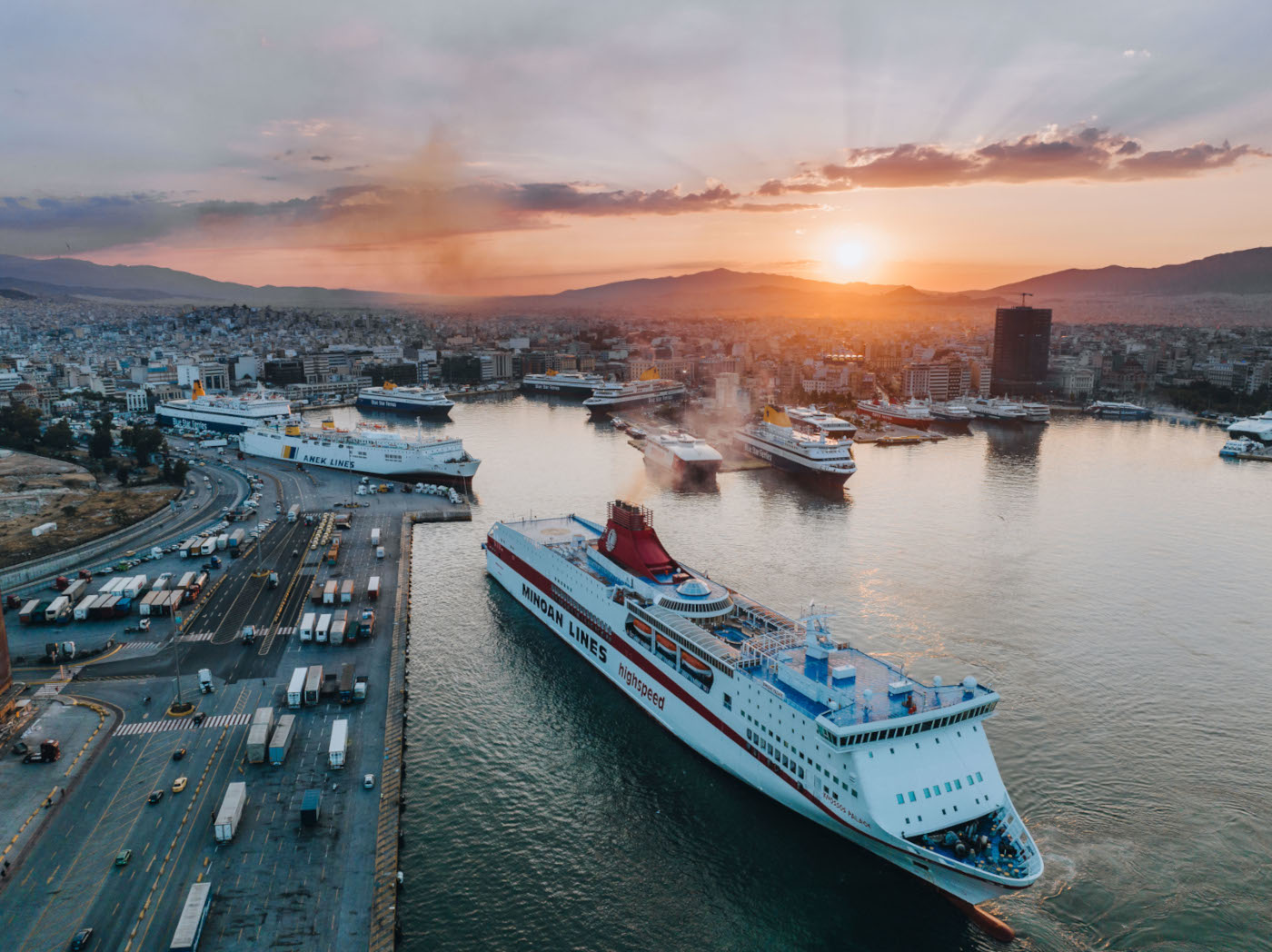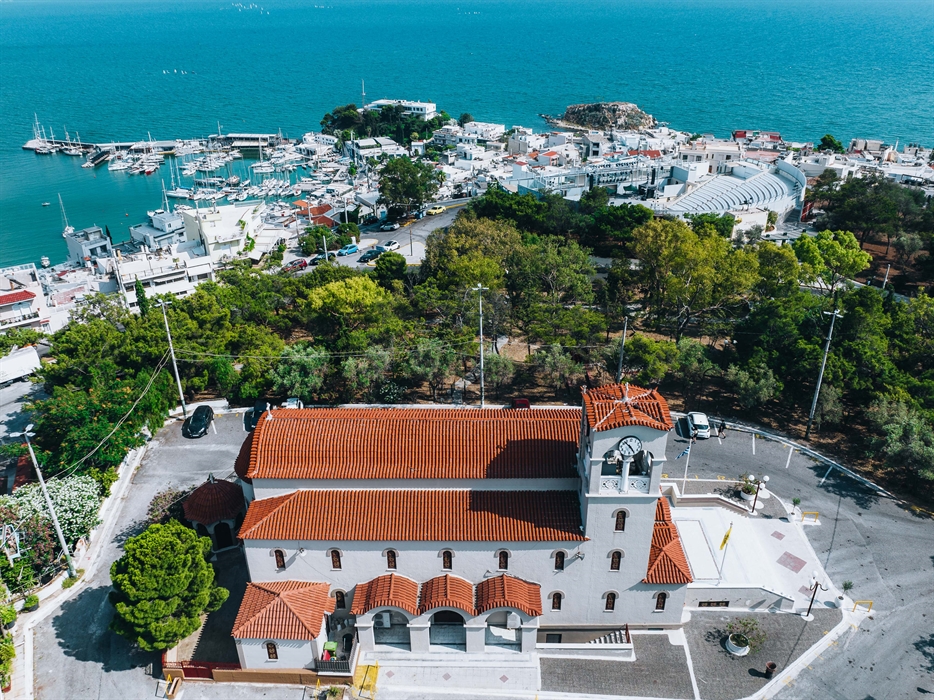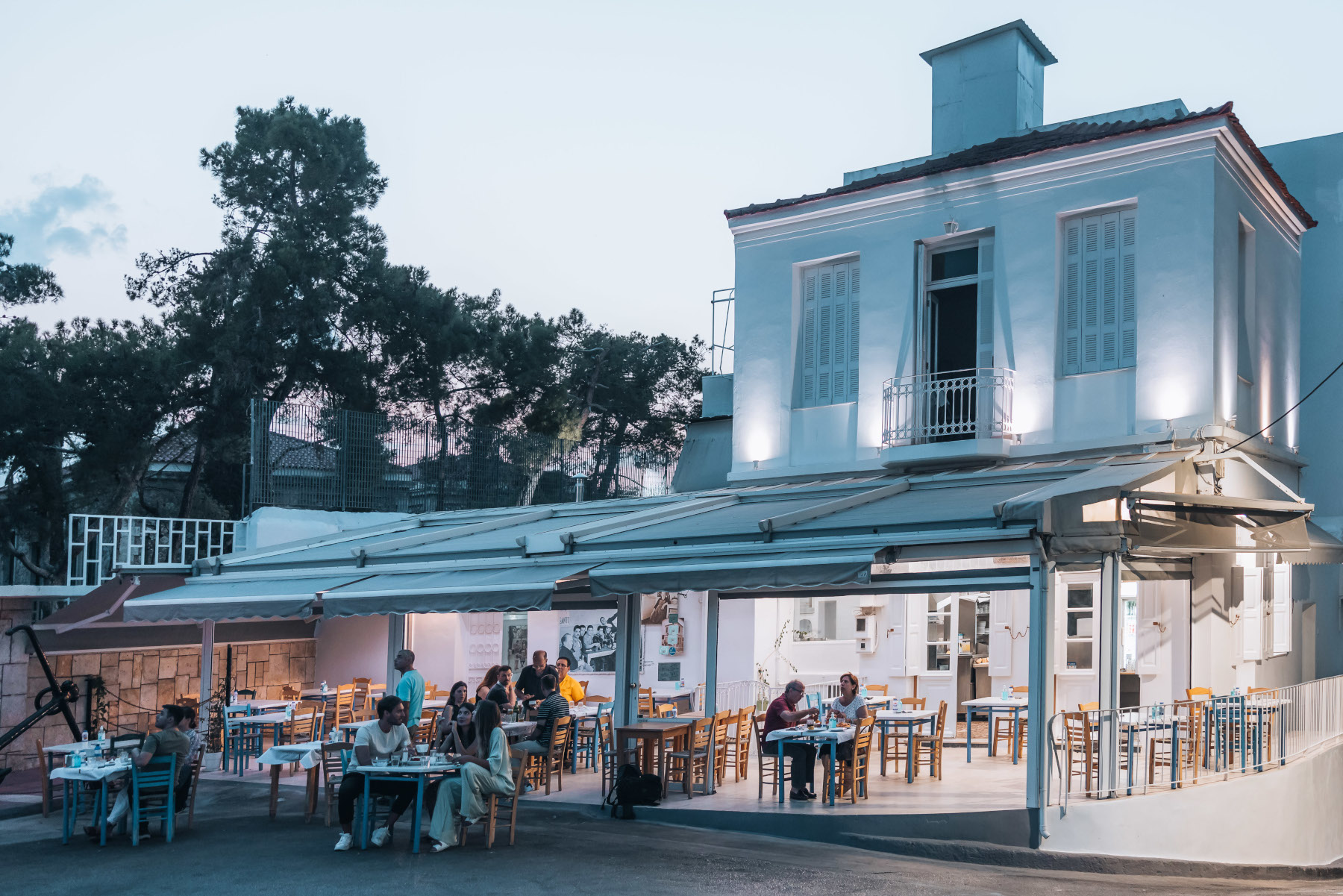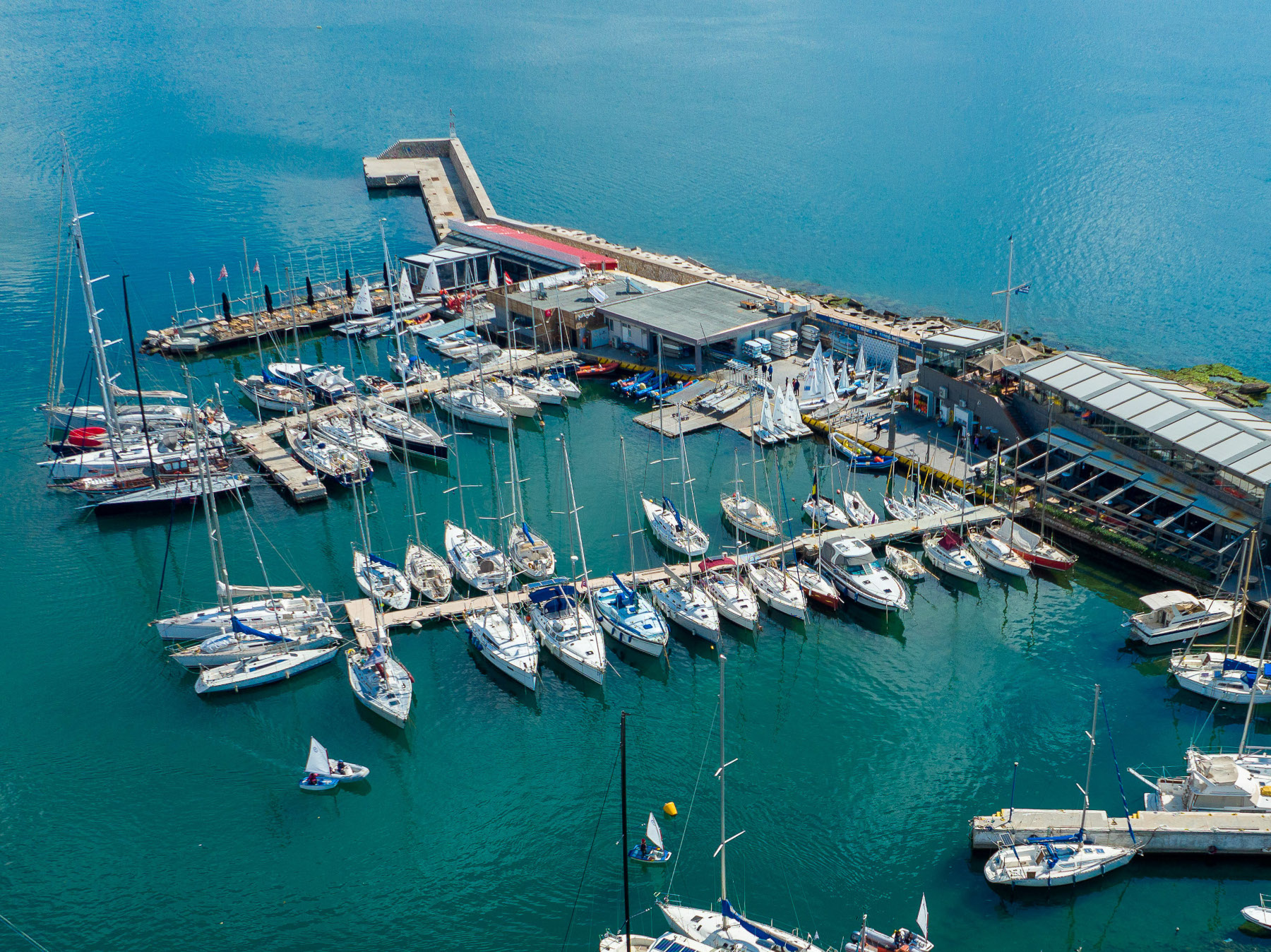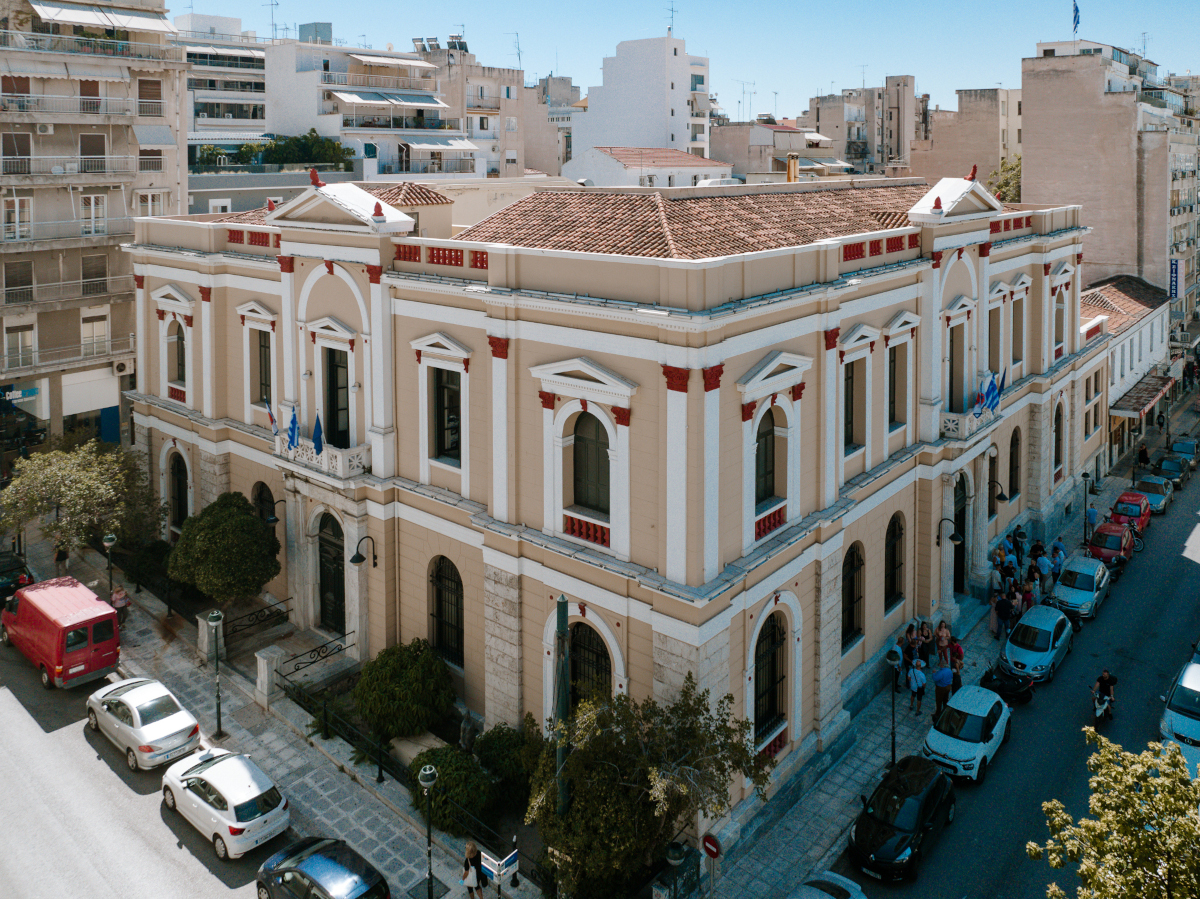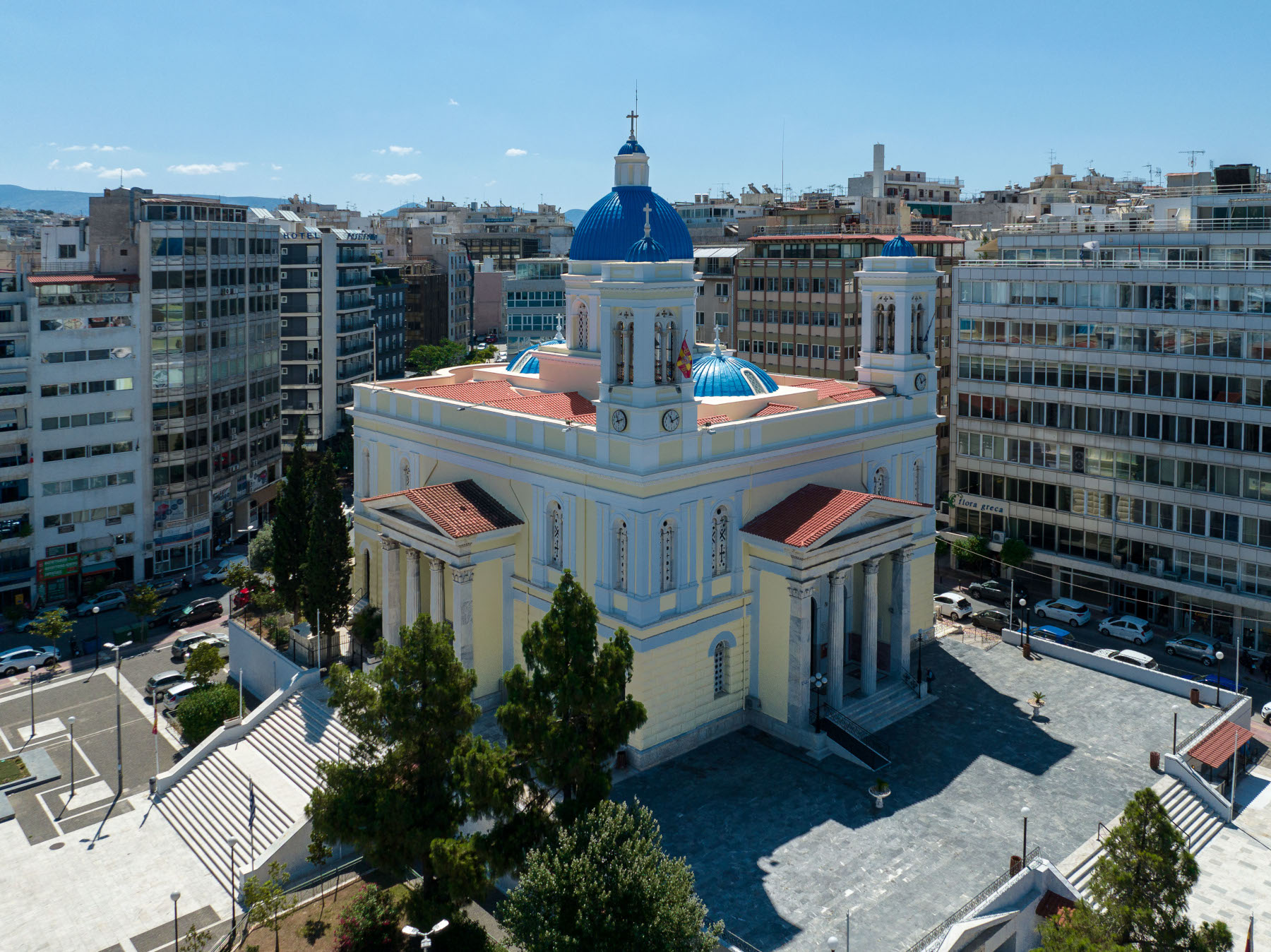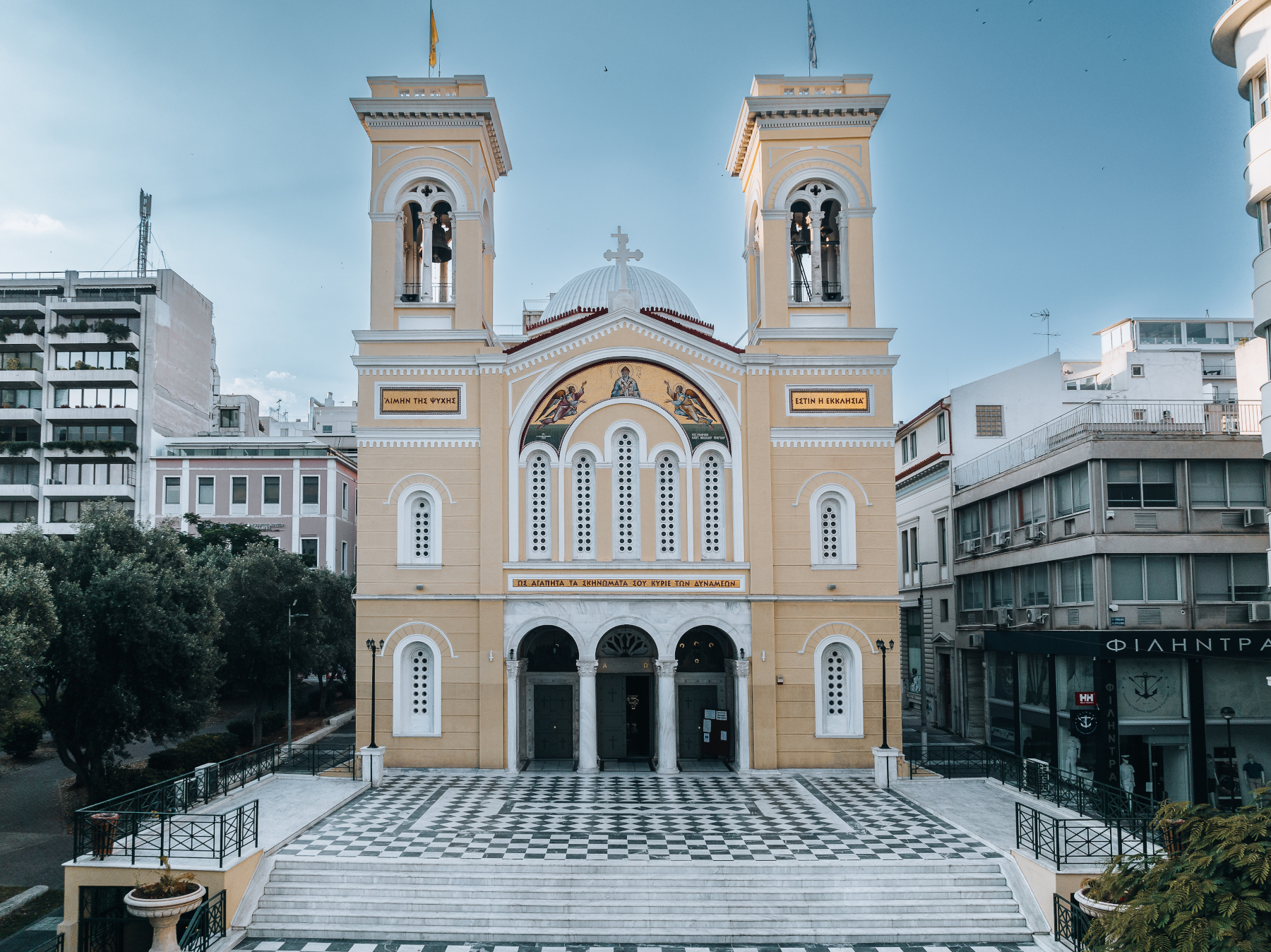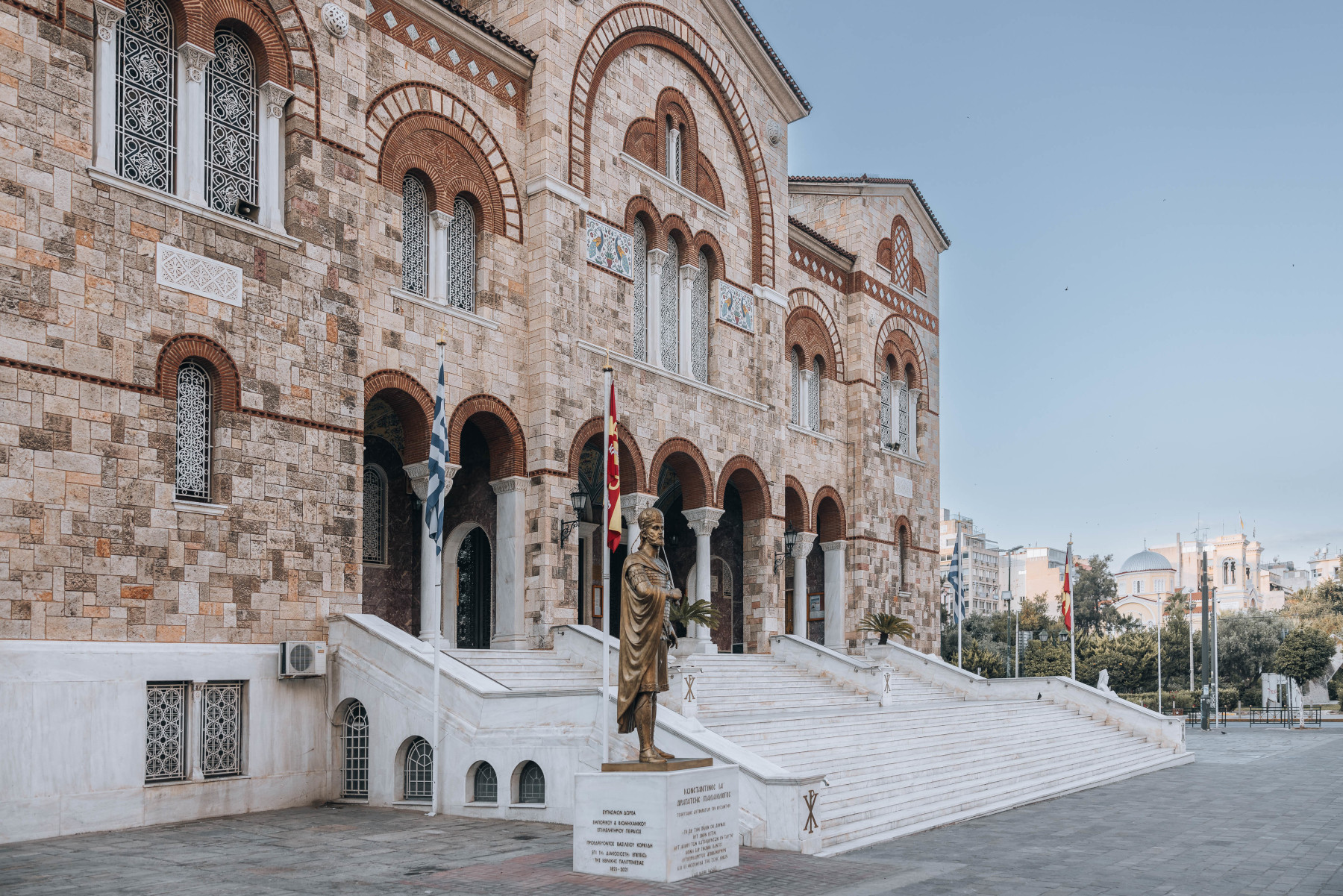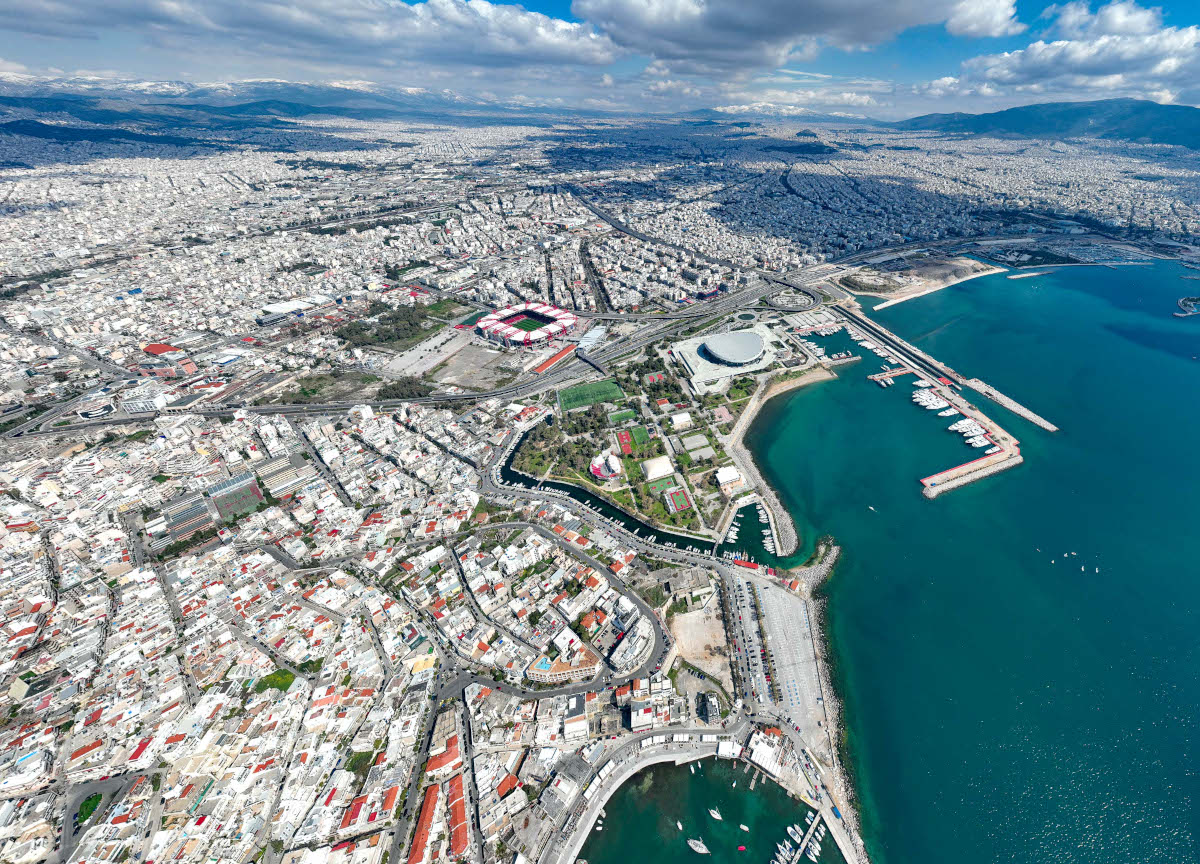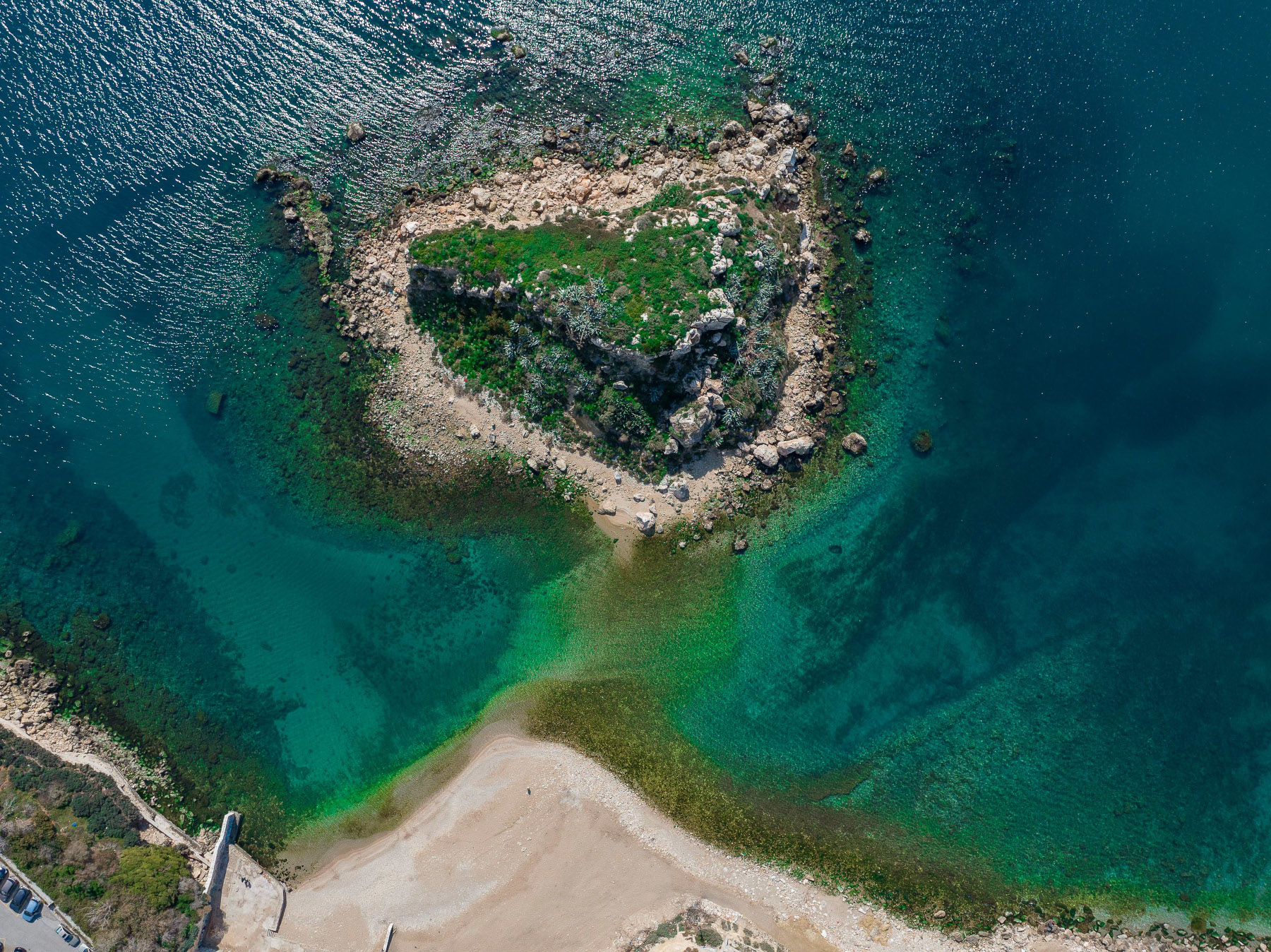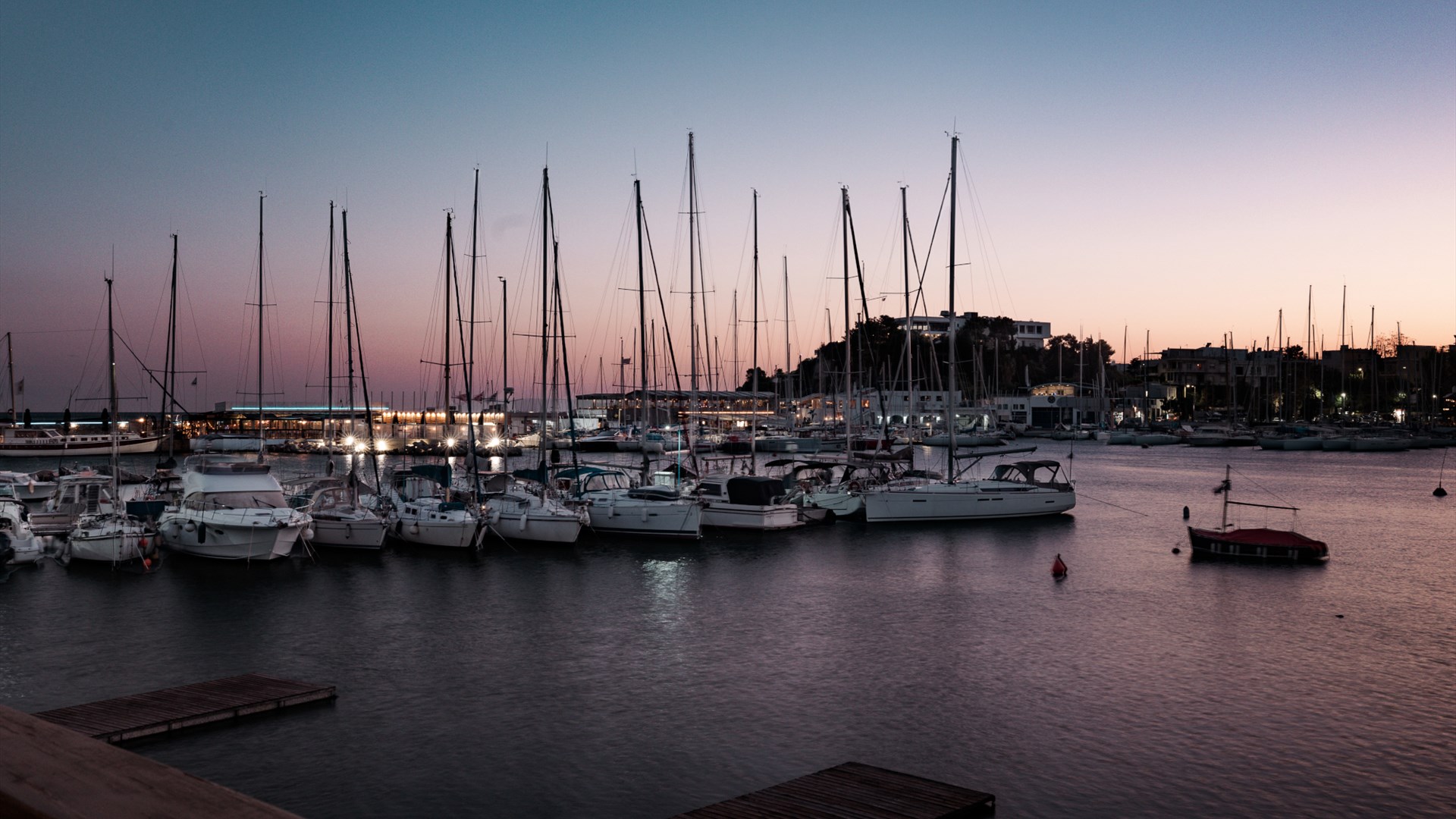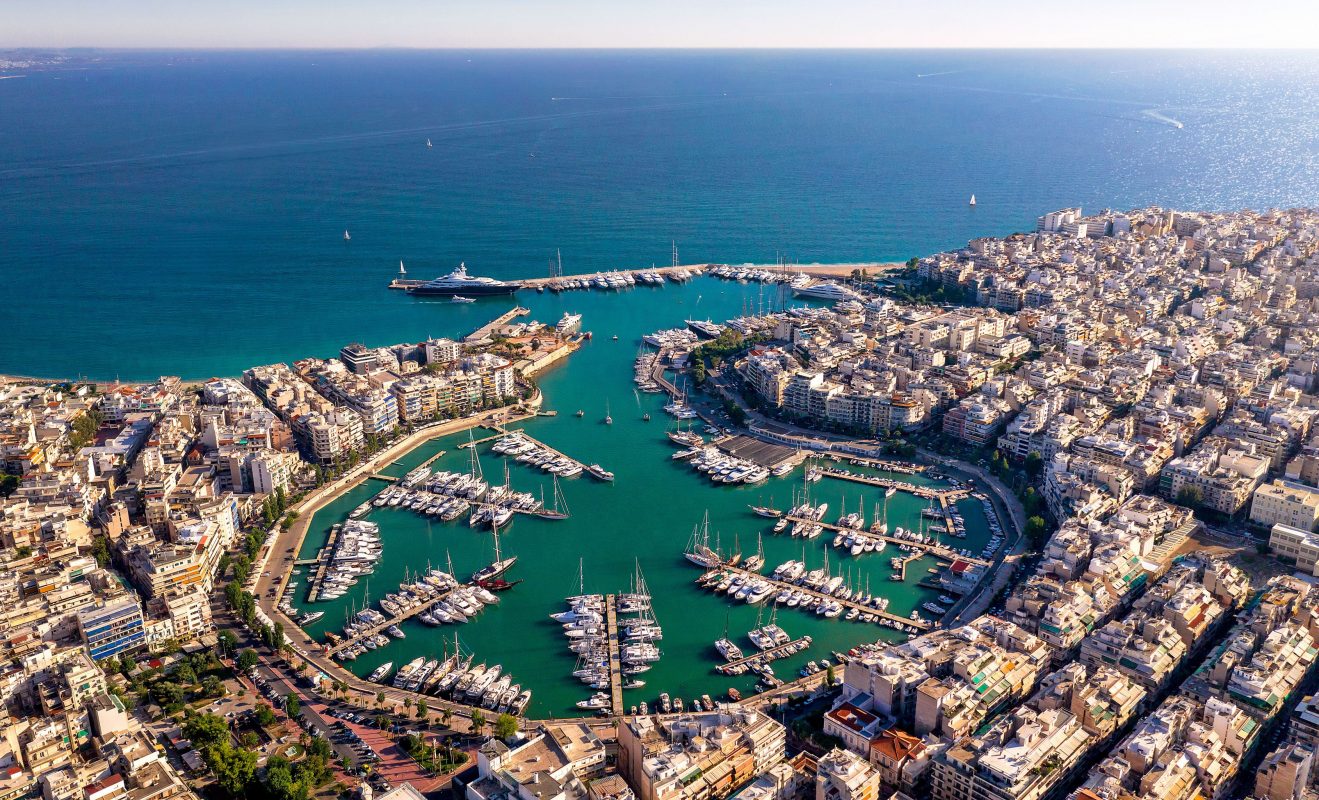The Municipal Theater of Piraeus
The Municipal Theater of Piraeus
You find yourself in the "heart" of Piraeus. It beats loudly: children play on the square at all hours, people and cars come and go, and all heads turn to look at it. It beats rhythmically: in the evenings, the voices of actors, sounds from concerts, and dance performances echo from its stage. It has been beating for many years, since 1895.
Whichever route you choose (city center), in the center of Piraeus, don't overlook this unique masterpiece: The Municipal Theater, a reference point for cultural life in the city from the 19th century to the present. It will enchant you with its architecture, history, and the elegance emitted by the performance hall and reception areas. Even better, get tickets and enjoy it while the voices of the audience slowly fade away, and the stage lights come on.
Raise the curtain, and let's go. The performance begins.
-Who designed the elegant neoclassical building. Ioannis Lazarimos, a scion of a historic Hydra family, who studied architecture and Fine Arts in Paris and Berlin. He designed the plans for the last temple of Saint Nicholas and the Saints Constantine and Helen.
-What sets its architecture apart. Due to its monumental appearance, it is considered the finest surviving Greek theater building from the 19th century! As you will notice, the white building with a propylaea resembling a temple and its four smooth Corinthian columns without flutes does not have ornate decorations and excessive embellishments. It is simple, with harmonious proportions. The exterior design was inspired by the Theatre of the Paris Conservatory. It has references to the classical tradition and is influenced by the German school represented by Ernst Ziller.
-What were the characteristics of the theater's interior. Its stage is considered one of the few remaining examples of European Baroque. It had a proscenium and an orchestra area. The square, the tiers, and the balconies evolved on four levels. The hall was illuminated - as it is today - by a huge chandelier, which, however, operated with gas in the 19th century. There were large dressing rooms and a luxurious lounge for the actors. Around the "petalo" of the central hall was a two-story foyer, where charity events and art exhibitions were organized. What wonderful years...
-Remnants of the Era. One month after the inauguration, the work 'Maria Doxapatri,' by Dimitrios Vernadakis, was presented with great splendor. Moreover, following the inauguration ceremony and until the evening, the municipal philharmonic orchestra performed famous classical musical pieces of the era in front of the theater area, which had been arranged to easily accommodate the 'Victorian carriages' and the so-called 'Viz-a-Vi' buses of the time."
-Notable past performances. The theater's initial success, which had a great impact on the broader population, was influenced by enthusiastic reviews and the presentation of significant artistic works, such as Shakespeare's "Hamlet" with the Lekatsas-Arniotakis troupe (1895), Puccini's "La Bohème" with the Gonzales troupe (1900), Euripides' "Alcestis" from Konstantinos Christomanos' New Stage (1901), Henrik Ibsen's "A Doll's House" or "Nora" and Xenopoulos's "Temptation" with the Kyveli troupe (1907 and 1911), August Strindberg's "The Father" with Thomas Oikonomou (1914).
-The Difficult Years From 1910 onwards, Piraeus and the Municipal Theater entered one of the worst historical periods. The Balkan Wars (1912-1913), the National Schism (1915-1916), and World War I (especially between 1917-1918) changed the daily life of the people and the theater. It began to serve the needs of the era as a barracks, school, and a space for public services, among other things. Unfortunately, the bombing of Piraeus by the Allies on January 11, 1944, destroyed a significant part of the magnificent building. It was declared a protected monument in 1980.
-When was the restoration done, and what do we see today. The complete restoration, which began in May 2008 and was completed with the enhancement of the interior decoration, the modernization and equipping of the stage, the redesign of the foyer and the refreshment areas. Today it has an exceptional and functional stage. It is considered one of the few theaters in Europe where the mechanisms of Baroque theater are preserved to a large extent. Its decoration has been revealed, and the design by Ioannis Lazarimos has been highlighted. You will be impressed by the 23 boxes and the space above the central hall's dome. And one more thing: for Greek theatrical standards, it continues to be a pinnacle of developments from earlier times.
-How did the theater return to the life of Piraeus. For the first theatrical season of the Municipal Theater of Piraeus after its reopening, the program included performances from the international and Greek repertoire, concerts, and exhibitions. The new era was inaugurated with the performance of Homer's "Iliad," directed by Stathis Livathinos. In parallel, collaborations were established with the National Theatre, the National Opera, and the State Orchestra. Interesting musical events were hosted, and theatrical tributes were held. Theatrical education is also a perennial goal of the operation of the Municipal Theater of Piraeus.
-Which great artists have appeared here. Important directors like Dimitris Rondiris, Gikas Mpiniaris, Stefanos Nikolaides, Michalis Kounelakis. Distinguished actors like Aimilios Veakis, Zachos Thanos, Adamantios Lemos, Dimitis Chorn, Mimis Fotopoulos, Vasilis Diamantopoulos, Manos Katrakis, Kyveli, Aspasia Papathanasiou, and many more. The audience has also enjoyed works by great composers such as Menelaos Pallantios, Manos Hatzidakis, Mikis Theodorakis, Dionysis Savvopoulos.
Information…
The restoration of the Municipal Theater of Piraeus in 2008 was carried out under the supervision of the Directorate of Restoration of Modern and Contemporary Monuments of the Ministry of Culture, funded by the Third Community Support Framework and the NSRF.
Address: 32 Heroes of Politechniou Avenue. Telephone: 210 4143310. More information and performance schedules can be found at https://www.dithepi.gr.
Ancient Findings
The excavations that took place in April 1884 for the construction of the Municipal Theater of Piraeus brought to light significant archaeological findings that divided the scientific community. Some claimed they pertained to parts of the ancient temple of Dionysus, while others believed they were one of the five ancient tunnels in Piraeus. However, both theories were disproven when three inscribed stone columns dating to the Macedonian era (2nd century BCE) were discovered. The content of these columns, published in 1885, definitively identified the architectural remains as belonging to the house of the Dionysiacs, which is to say, the private facilities of a cult devoted to Dionysus.
*Sources: Municipal Theater of Piraeus website, "Municipal Theater: Memory and Theater History," album "Piraeus: Center of Shipping and Culture."
Location
Find the destination on the interactive map below. See on the map.
Related route
Follow the route below and get to know our area better through its destinations.



